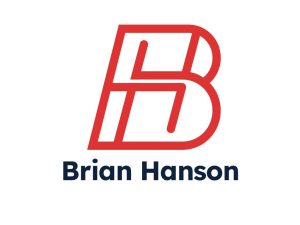Since the beginning of our series on On-site SEO, we’ve been steadily moving through the page from top to bottom. We’ve already discussed creating search engine optimized titles and meta descriptions. Now, we’ll get into the meat of the webpage – the content.
As we mentioned before, there are two aspects of creating effective content for your website. The primary role of website copy is to communicate with readers. To this end, it should be actionable and conversion-friendly. But the other consideration is how search engines will see your text. That’s where keyword placement and keyword density matter.
Keyword Density
Keyword density simply refers to how often a certain keyword appears in your text compared to your total word count. For example, if your webpage has 100 words total on it and 4 of them are keywords, then you have a keyword density of 4 percent.
You might assume that a higher keyword density immediately means a better search engine ranking for that term. But that’s not necessarily true. Keyword density is just one factor in determining your search engine ranking. And as with all things in life, moderation is key.
If your keyword density is too low, it’s possible that you won’t rank at all for your targeted search terms. If they your density is too high, however, you run the greater risk of being penalized by the search engine or worse, turning off your readers.
Search engines have varying (and ever shifting) opinions on what’s the ideal keyword density, but in general, Google prefers the most conservative keyword density (between 1 and 3 percent) while Yahoo! and Bing see keyword density between 2 and 9 percent as acceptable. Given Google’s vanguard behavior and market share in the search engine space, your best off catering to their preferences.
Keyword Placement
More important than keyword density is keyword placement. Google and other search engines give different weights to keywords depending on where and how they appear on your webpage. Most of the high value areas to insert keywords are logical, such as:
- Titles
- First 50 words of first paragraph
- Headings and subheadings
- Anchor text (i.e. link text)
- URLs and domain names
- ALT text
These elements introduce opportunities for highlighting the topic and subject matter of your webpage for search engines and their users – but these opportunities should not be abused. As always, you should use common sense when filling out these aspects of your webpage with keywords. Here are some areas where you should be careful:
Titles and Headings
Do not use the keyword more than once in a title or heading. It’s bad writing and it’s bad SEO.
ALT Text
As explained in this official Google video, the IMG tag on its own won’t tell search engines much about a picture. For robots that can’t see photos the way people do or for people whose browsers won’t render pictures (say, a mobile phone user), the ALT and TITLE attributes can fill this gap. Keep both of these short and sweet – the title should name the image in one or two words, as if it were a piece of art (“Cat on Piano” or “Poker Night”) and the ALT text should succinctly serve as an alternate description for someone who can’t see it (“A picture of a calico cat walking on a grand piano” or “A painting of dogs sitting around a poker table”). Trying to cram a keyword stuffed paragraph into the ALT tag is counterintuitive and unequivocally spammy and will ultimately hurt you both in terms of readability and ranking.
Anchor Text
It’s always better to use relevant keywords in anchor text (For example, “Click here for more vegan waffle recipes” is better than “Click here for more vegan waffle recipes”). But the operative word here is relevant. Including misleading links to internal or external pages will only puzzle and infuriate readers and search engine spiders alike.
Conclusion
When writing the content of your webpage, focus on readability first. But at the same time, work to create copy with a 1 to 3 percent keyword density and a diversified and strategic placement of your keywords. Use your keywords wherever and whenever you can without alienating your human audiences as well as in key, not always visible areas such as meta tags and ALT text. This will help your website both in terms of indexing and readability.
This is part three of our series discussing on-site SEO. Read more:
- Part One: Titles
- Part Two: 5 Tips for Effective Meta Descriptions
- Part Three: Keyword Placement and Keyword Density
- Part Four: Domain Names – Rankability vs. Branding
- Part Five: Filenames and URL Structure
